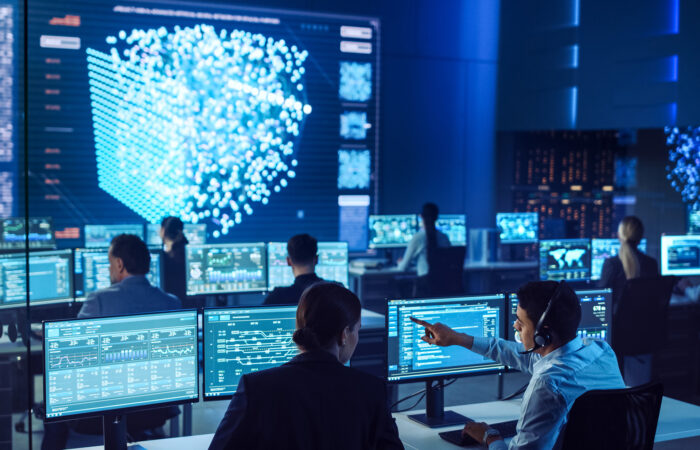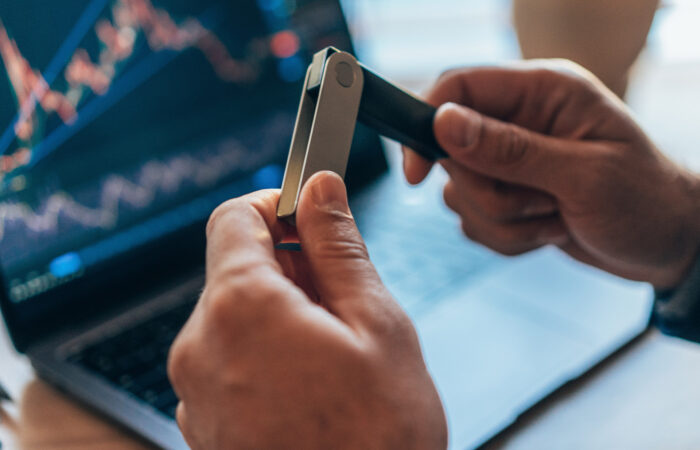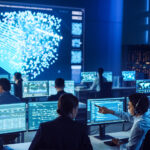Self-help authors and politicians seem to agree on at least one thing: mindset matters. The shelves of bookstores worldwide are awash with motivational books by evangelical writers hoping to convert readers to their gospel of optimism. The central thesis is simple: success depends on approaching life, especially its challenges, with a positive outlook.
Politicians and leaders have always appreciated the power of mindset, though less of the positive kind, as attested to by a history of propaganda that dates back to at least 500 BC. More recently, as Covid-19 spread across the globe, language in public discourse showed itself to be carefully selected to shape national mindsets. War metaphors, specifically, became the favoured way of talking about the virus that was, despite its many negative consequences, still just a virus, not a sentient foe.
Donald Trump declared himself a “wartime president”, leading the US in a campaign against an “invisible enemy.” UK Prime Minister, Boris Johnson, also named the virus as an “enemy” that was being fought by his “wartime government.” His chancellor, Rishi Sunak, and his Health Secretary, Matt Hancock, kept to the same script, naming the “war against this virus” as the greatest fight “in peacetime” the country had ever faced. Italian Prime Minister, Giuseppe Conte, referenced the speeches of Winston Churchill, describing the pandemic as “our darkest hour.” Even António Guterres, Secretary-General of the United Nations, felt compelled to announce, “We are at war with a virus.”
There is nothing particularly new in all of this – the language of war has long been used as a tool to reliably “express an urgent, negatively valenced emotional tone that captures attention and motivates action.” Yet, in the case of the Covid-19 pandemic, it is useful to contrast popular war-themed rhetoric with a more embracing perspective.
Dr. Yuko Harayama is the Executive Director for international affairs, communication, and diversity at RIKEN, Japan’s largest research organization for basic and applied science. When asked about the impact of the coronavirus emergency, Harayama replied,
“After the pandemic, we have to foresee a future where humans are not dominating everything; humans are just one part of nature. We should not be arrogant to say we’ll dominate coronavirus.”
Harayama’s measured response says a lot about the way she sees the interaction between humans and the world around them. It also says a lot about Society 5.0, behind which Harayama was the driving force during her time in the Cabinet Office of Japan, where she was an executive member of the Council for Science, Technology and Innovation.
Society 5.0 is the vision of a future in which humans and machines “co-create” the solutions to societal problems by integrating cyberspace and physical space. First proposed in Japan’s 5th Science and Technology Basic Plan as a future that the country should aspire to, Society 5.0 represents the next step towards a more successful human collective.
Rather than simply using technology to improve our means of production, this plan is intended to create a new social contract and economic model by fully integrating cutting-edge technological innovations into our social fabric. In the words of Shinzo Abe, the Japanese Prime Minister under whose administration the vision was launched, Society 5.0 sets “a new definition for machines.” Leveraging advanced robotics, AI, cloud computing, next generation connectivity, and big data, Society 5.0 is intended to liberate machines of their narrow functions in industry and society. Instead, they will become active problem solvers and evolutionary enablers.
According to researchers at Hitachi-UTokyo Laboratory, a partnership between The University of Tokyo and Hitachi, the realisation of this view will also require us to reframe two kinds of relationships: the relationship between technology and society and the technology-mediated relationship between individuals and society. This is a crucial point because it highlights the human-centric nature of Society 5.0, a quality that neatly distinguishes it from the fourth industrial revolution.
Beyond 4IR
We are in the emergent stages of the fourth industrial revolution (4IR)–a reimagining of production through the digitization of manufacturing.
The first industrial revolution employed steam and water power to improve output. The second used electricity to do the same. The third industrial revolution used computers and automation to accelerate production.
4IR, or Industry 4.0, builds on the power of computerized automation by introducing machine and systems autonomy. Through wireless networks of sensors, receivers, and processors, vast amounts of manufacturing data are collected and processed by artificial intelligence, currently of the “narrow” or “weak” kind.
These autonomous arrangements of physical and virtual computing elements are effectively capable of learning in real-time. They continuously improve production processes, making decisions based on super-fast analysis of live and historical data collected from the production environment.
The first industrial revolution reduced the need for human labour. The second increased efficiency by mechanizing large production lines. The third used computers to automate these processes even further, but still required humans to manage production.
The fourth industrial revolution goes further to make human intervention in production applications almost redundant. Smart factories, for example, are independent cyber-physical systems in which people are necessary only for specialized jobs, machine maintenance, high-level network management, and strategic guidance.
However, society 5.0 is something different from Industry 4.0. In the words of the Japanese Cabinet Office, “This is a society centered on each and every person and not a future controlled and monitored by AI and robots.” It is a human-centred proposition that seeks to use the same relationships between cyberspace and physical space to solve social problems.
The fourth industrial revolution relates specifically to commerce and manufacturing through better use of machines, but the non-commercial consequences of 4IR are often overlooked.
What, for example, will be the societal effects of 4IR?
As AI and automation make many human jobs redundant, what will be the impact on the nature of work, communities and social structures?
What will happen to economies as medical improvements lead to an aging population?
What will happen to the environment as human production and consumption continue to grow?
These are wicked problems, even though they are the result of largely positive trends towards more widespread human wellbeing. And they would not be vexing us were it not for technology.
Of course, this does not make technology bad, or even good–it is agnostic–but it does raise the question: if we used technology to get ourselves into these dilemmas, can we use it to get ourselves out?
The notion of Society 5.0 is an emphatic ‘yes’ to that question. It is a proposal for humanity’s next evolutionary step. According to the Japanese government, this would be the 5th stage of human society. Initially (Society 1.0), we organized ourselves in small groups or tribes of hunter gatherers, living off the natural output of the land. Then, through horticulture and agriculture (Society 2.0), we used tools to harness the growing potential of the earth, giving us more control over our food production. Society 3.0 saw us move into the industrial era, and Society 4.0 represents the information age we are living through now.
Society 5.0 assumes that, through a high degree of convergence between cyberspace and physical space, we can achieve a forward-looking society in which each and every person can lead an active and enjoyable life.
New solutions for new problems
The pace and extent of globalization have meant that new challenges have emerged that were either not anticipated, or at least not expected for some time to come. And, having a more integrated world means having more integrated problems that are more difficult to solve.
Sustaining economic growth while reducing income inequality and environmental degradation; improving the welfare of an aging population while ensuring opportunities for the youth; providing for more people using limited resources; slowing down, stopping, and then reversing the effects of climate change: these are wicked problems, but Society 5.0 represents an integrated approach to tackling them through multiple domains.
Healthcare
An increase in global life expectancy has been one of the great achievements of medical progress over the last two hundred years. According to World Bank data, average life expectancy at birth across all countries increased by more than 30 years between 1960 and 2019 alone. In the late nineteenth and early twentieth centuries, this trend was largely due to improvements in living conditions (especially sanitation), education, and advances in medical treatments like vaccines and antibiotics. These factors helped reduce early to mid-life mortality, but since the later parts of the twentieth century, rising life expectancy has been principally attributed to lower mortality later in life. Quite simply, the average human has been living longer. However, this has not necessarily been positive.
The WHO reports that, in the first two decades of this century, life expectancy around the world rose by an average of 6.6 years. Healthy life expectancy (HALE) also rose by 8% during the same period, though this was not due to reduced years living with disability. Instead, increases in HALE were attributed to declining mortality rates. People have been longer but not living longer well.
This discrepancy places a burden on societies and economies, an effect that is particularly pronounced in richer nations. In the 24 countries classified as high income by the World Bank, people aged 25 to 59 earn more than they consume, while the elderly do the opposite. Inevitably, as a population’s life expectancy increases, the cost of social support rests more heavily on working-age citizens, while pressure on government budgets grows. Quite simply, an ageing population puts economic strain on society as a whole.
It’s not surprising, then, that the original idea for Society 5.0 originated in a country like Japan, where life expectancy is higher than anywhere else on earth and a third of the population is 60 years or older.
However, as medical technology and social support structures across the world improve in quality and affordability, more and more nations will face the challenges of having an aging population. These include increasing medical and social security expenses, and the demands of caring for the elderly.
In Society 5.0, wearable medical devices will allow health and physiological data to be captured, uploaded and analyzed remotely, permitting early (AI-driven) detection and diagnosis of illness. Medication and healthcare services will be delivered by drone and autonomous vehicles, giving elderly people in rural areas equal access to quality healthcare. Robots and AI will assist in giving elderly citizens living support, even offering them the conversation and companionship that is critical to greater mental health.
In combination, these results will lessen the burden on public healthcare systems, lowering the need for hospital visits and improving the accuracy and efficacy of diagnoses and medical prescriptions.
Smart cities and mobility
In 2009, for the first time, the number of people living in urban centres globally surpassed the number living in rural areas. Though a significant moment, this was simply a milestone in a steady rise in urbanisation that saw the world’s urban population increase six-fold from from 751 million in 1950 to 4.2 billion in 2018. By 2030, that number is expected to top 5 billion. By 2050, an estimated 68% of the world’s population will live in cities.
The pressure that this urban growth is placing, and will continue to place, on infrastructure and resources is immense. Smart technologies will be critical to the success of these cities in managing the complex challenges created by having so many people in limited spaces: problems like waste management, energy management, water and power management, connectivity, public safety and security, transport and logistics.
In Society 5.0, the urban cohort of the world’s citizenry will be defined by an open embrace of cyber-physical technologies – by necessity and for pleasure. Cities will no longer be the traditional bricks and mortar environments we have been accustomed too. They will become cyber-physical realms built on data as much as concrete and glass.
This data will be collected and distributed by vast networks of sensors and processors, feeding AI-driven decision-making on the back of next-generation connectivity. In the cities of Society 5.0, no area of human activity will be left untouched by smart technologies.
While other aspects of the Society 5.0 vision still reside in the future, the evolution of smart cities is already well underway. Early adopters in Europe included Barcelona and Amsterdam, with Copenhagen, Dubai, Hamburg, Nice and Singapore quickly following suit. In North America, New York, Chicago, Miami, San Francisco, Kansas City and Montreal are also examples of cities implementing smart city initiatives.
While living in Singapore, Marin was fortunate to work on many of the city’s “Smart Nation” programs, learning first-hand how such projects incorporate technology across transport, health, home, and business to create a network of interconnected digital experiences that enhance citizen’s lives and optimize their work and play.
China has aggressively developed smart cities, which monitor and seek to address common urban challenges like pollution, traffic congestion and widespread energy consumption through connected technologies. The government’s 12th Five-Year Plan announced in 2013 included the development of 103 smart cities, districts and towns.
Less radical and more pragmatic is India’s “Smart City Mission.” Initially investing in 90 cities to develop smart capabilities, this evolving, layered system solves specific issues such as clean water while organically developing smart integrations over time.
In the US, the “Smart City Challenge“ saw more than 78 cities across the country enter the inaugural challenge focused on tackling 21st Century transport issues. Through shared innovation and intelligence the program nurtured ideas for an “integrated, first-of-its-kind smart transportation system that would use data, applications, and technology to help people and goods move more quickly, cheaply, and efficiently.”
On the opposite end of the scale, depopulated rural areas of the future will have fewer public transport options or none at all. In these regions Society 5.0 will see the provision of autonomous public services, including driverless taxis and buses for public transport, drone-based distribution and delivery services, and digital support for mental and physical wellbeing.
Infrastructure
As with individuals’ health, social care for public infrastructure and services will become proactive in Society 5.0. This move will be the backbone of civil management in smart cities.
Installations like roads, buildings, tunnels and dams will be monitored by sensors supplying a continuous feed of data. This information will allow preemptive maintenance and efficient deployment of technicians with specialized skills.
As a result, accidents will be minimized, time and resources spent in construction and repair work will be reduced. Safety and productivity will increase.
Agriculture
A declining rural population worldwide is leading to a labor shortage in agriculture, This, in a sector that is under increasing pressure to raise production while working against the challenges of more extreme climate patterns.
In Society 5.0, AI analysis of big data, such as meteorological data, crop-growth data, market conditions, and food trends and needs, will lead to hyper-efficient agricultural management.
These “intelligent” data-based decisions will be carried out by autonomous farming vehicles and machinery. From soil preparation to crop collection to seed planting, robots, drones and driverless farm equipment will take over many traditional farm labor roles.
The world population is expected to reach 9 billion by 2050. Only through AI and machine-optimized agricultural management will we be able to feed so many people.
Disaster prevention and response
As we see more examples of extreme weather around the globe, the future value of predictive climatological and geological information is becoming clearer and clearer.
As Society 5.0 unfolds, data acquired from terrestrial weather radar, satellites, geological sensors, drones and public observation systems will become invaluable. Processed in real-time using AI, this information will deliver those precious minutes or hours’ warning of impending disaster that can save lives.
Widespread access to mobile networks will allow safety and prevention broadcasts to be disseminated directly to end users, while devices can be used to geolocate individuals in trouble.
To those trapped by environmental disasters, relief and rescue materials can be delivered by drones, which will also be able to feed back video footage of victims’ state of wellbeing.
Energy
In a world of 9 billion people, much of the competition for resources will effectively be a competition for energy. Optimal energy creation and management will be crucial to a harmonious society.
As energy production moves more towards green alternatives like wind and solar, weather plays a more important role. Analysis of weather data and accurate prediction of weather patterns will a key aspect of reliable electricity manufacturing.
Big data processing by AI will also optimize electricity flows across the grid to meet vacillations in demand and supply. This will be particularly important in smart cities where responsive systems in buildings and public locations will manage energy down to the minute, and most forms of transport will become electric.
Other
Though the Japanese Government was the first to formally use the term “Society 5.0,” we envisage a broader reach than that originally defined. We have borrowed it for this book because it speaks to the inclusivity we anticipate for a world in which the cyber and physical are fully integrated.
To that end, any catalogue of potential domains to be influenced by the advances of Society 5.0 must include an “Other,” simply because there will be no aspect of human endeavour that will go untouched. We could speak here of shipping, international travel, space travel, environmental management, genetics, arts and entertainment, sports – the list is endless.
Convergence with caution
The true power of Society 5.0 will lie in its degree of integration. As Shinzo Abe said, in Society 5.0 “we must cherish connectedness, above all else.” The more the cyber and physical worlds are combined, the greater the benefits we will experience.
However, the same is true of cyber threats. The more technology is incorporated into every corner of our social being, even our physical being, the greater the risk to our personal and collective safety.
Society 5.0 is built on an intricate network of sensors, devices machines and systems–a vast internet of everything. Each of these components broadens the cyber attack surface, but also elevates the stakes in the case of fallout.
When technology is woven into the tapestry of all we do, it is not hard to see the potential dangers. Autonomous vehicles, AI-operated public transport systems, fleets of drones, critical disaster prevention processes–these can all be hacked.
That is true today, but, as we will explore in detail on Part 5 of this book, the difference in Society 5.0 is that all relationships are cyber-kinetic. Virtual events have physical results. People get hurt. Or worse.




